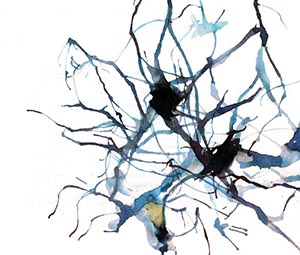Studying neurons from urine

Read other items from "MindSpec presents Society for Neuroscience"
by Wayne Pereanu
What was known.
In 2006, a paper was published showing that it is possible to take a cell from an adult (in the paper they used a cell called a fibroblast), and expose it to various chemicals to make it turn into a less developed state. In theory, these induced pluripotent stem cells (iPSCs) could then be used to produce any type of cell in the adult organism. You can read more about iPSCs on our stem cell page. There are various research avenues that are opened up by having access to these iPSCs. However, one of the tantalizing possibilities is that of personalized medicine. What this means is that potentially a sample of hair, blood or skin could be taken from a patient. These cells can then be turned into iPSCs, and then into cells of the brain, neurons. Various drugs could then be applied to see how the specific patient might respond to each one.
What's new?
S. Gong presented unpublished work at a poster session on November 14th showing the generation of iPSCs from urine samples. These urine-derived iPSCs were then subjected to two chemical systems (SB431542 and Drosomophorin) to turn the iPSCs into cells of the brain, neurons and glia. The group then studied how the urine-derived neurons formed and functioned under different conditions. The work serves as a concrete example showing the entire process from urine to nuanced tests of neurons.

